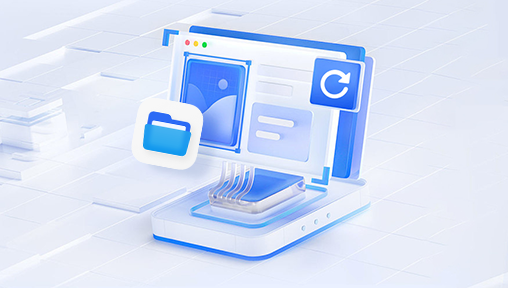Recovering an unsaved Word document can be a stressful experience, especially when you realize important work has been lost due to accidental closure, software crashes, or power failures. Fortunately, Microsoft Word includes several built-in tools and there are various external methods and tips to help you recover unsaved Word documents effectively.
Why Word Documents Become Unsaved or Lost
Before we delve into the recovery methods, it is important to understand the common reasons why Word documents might end up unsaved or lost:
Accidental closure: Closing Word without saving changes.
Unexpected shutdowns: Power outages or system crashes during editing.
Application crashes: Word unexpectedly stops responding or crashes.

File corruption: Damage caused by improper saving, disk errors, or malware.
Overwriting: Saving over the wrong file or mistakenly deleting.
Temporary file deletion: Windows or cleanup utilities removing temp files.
Storage issues: External drive disconnection or network problems.
Understanding the cause helps in choosing the best recovery strategy.
1. Using Word’s Built-In AutoRecover Feature
What is AutoRecover?
AutoRecover is a built-in feature in Microsoft Word that saves temporary copies of your document at regular intervals. This enables you to restore recent changes if Word closes unexpectedly or you forget to save.
How to Ensure AutoRecover is Enabled
AutoRecover is usually enabled by default, but you can verify and adjust its settings:
Open Word.
Go to File > Options > Save.
Check that Save AutoRecover information every X minutes is enabled (default is 10 minutes).
Confirm AutoRecover file location to know where Word stores temporary files.
Optionally, enable Keep the last AutoRecovered version if I close without saving.
Recovering Unsaved Documents with AutoRecover
If Word crashes or closes unexpectedly:
Reopen Word.
The Document Recovery pane should automatically appear on the left side, showing autosaved versions.
Select the document to open.
Save the document immediately to a secure location.
If the Document Recovery pane does not appear:
Go to File > Info > Manage Document > Recover Unsaved Documents.
Browse the list of unsaved files.
Open the file and save it promptly.
Notes on AutoRecover
AutoRecover saves files at intervals, so any changes made after the last autosave may be lost.
AutoRecover files are deleted once you save and close normally.
Frequent saving remains the best practice.
2. Recovering from Temporary Files
When Word autosaves, it creates temporary files with extensions such as .asd or .tmp. These can sometimes be recovered manually.
Locating Temporary Files on Windows
Open File Explorer.
Navigate to the folder indicated in the AutoRecover file location setting or check the default temp directories:
%AppData%\Microsoft\Word\
C:\Users\[YourUser]\AppData\Local\Microsoft\Office\UnsavedFiles
Look for files with .asd or .tmp extensions.
Copy the file to another location.
Rename the extension to .docx or .doc if necessary.
Open with Word.
Using Windows Search
Search your computer for files with .asd or .tmp extensions to locate orphaned autosave files.
3. Using the Document Versions Feature (Word 2010 and Later)
If your file was saved previously but changes were lost:
Open the file.
Go to File > Info.
Look for Versions or Manage Document.
Select an earlier version to view or restore.
This works if Word’s versioning or OneDrive’s version control was active.
4. Searching the Recycle Bin
If your Word document was deleted accidentally:
Open the Recycle Bin.
Search for the document.
Right-click and choose Restore.
Restored files return to their original location.
5. Recovering From OneDrive or Cloud Storage
If you save your documents to OneDrive or another cloud platform, you can recover previous versions or deleted files.
Recovering Deleted Files in OneDrive
Log into your OneDrive account.
Check the Recycle Bin for deleted documents.
Restore files if found.
Using Version History
In OneDrive or SharePoint, right-click the file.
Select Version History.
Choose a previous version to restore.
6. Using the “Open and Repair” Feature for Corrupted Files
If a Word file is damaged and won’t open properly:
Open Word.
Go to File > Open.
Select the corrupted file.
Click the dropdown next to Open.
Choose Open and Repair.
This attempts to fix the file and recover as much content as possible.
7. Recovering from Backups
If you use Windows Backup or third-party backup software:
Browse your backup files to locate previous versions.
Restore from backup.
Windows File History can also restore earlier versions of files or folders.
8. Using Third-Party Recovery Software
Drecov Data Recovery
Drecov Data Recovery is a reliable and efficient tool designed to recover a wide range of lost or unsaved files, including Microsoft Word documents. Whether your Word file was deleted accidentally, lost during a power outage, corrupted, or closed without saving, Drecov Data Recovery offers an intuitive solution to restore your important work.
When a Word document goes missing, the software performs a thorough scan of your device’s storage. It searches not only for deleted files but also for temporary and autosaved versions that Microsoft Word may have created in the background. Drecov Data Recovery supports recovery of both .doc and .docx formats, making it compatible with all modern versions of Microsoft Word.
To use Drecov Data Recovery, simply install and launch the program. Choose the drive or folder where the document was last saved or edited. Start the scan, and the software will display a list of recoverable Word files. You can preview the documents before restoring, allowing you to ensure you are retrieving the correct version.
9. Preventive Tips to Avoid Future Data Loss
Save Often
Use Ctrl + S frequently.
Enable AutoSave (Microsoft 365)
Turn on AutoSave to save files continuously when working with OneDrive or SharePoint.
Use Cloud Storage
Save files on cloud platforms with versioning.
Create Backups
Use Windows File History or other backup solutions.
Close Applications Properly
Avoid forced shutdowns.
Keep Software Updated
Ensure Word and Windows are up to date to minimize crashes.




